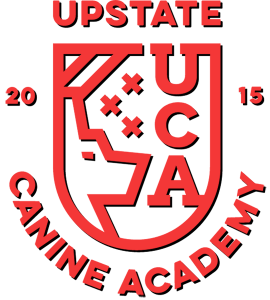Who doesn’t love a puppy? Those soulful eyes. That cuddly fur. The endearing antics. It’s easy to be an indulgent pet parent.
But puppies grow into dogs, and the endearing antics may become not so endearing. You may not feel so indulgent about out-of-control behaviors. Rather than trying to undo bad habits, we recommend you teach your puppy just five basic lessons to start them on the road to being a happy, well-behaved dog. Your dog will be more confident and pleasant to be around, and you’ll be a happier pet owner.
Getting Started
If you’ve just brought home a new puppy, congratulations! Here are five basic things you can work on with your puppy.
Build your relationship
Your puppy needs to see you as the source of all good things and the undisputed leader. You can start your puppy on this path with some basic name recognition training combined with hand feeding.
Here’s how it works. You put your puppy’s morning or evening portion of kibble in your treat pouch and put your puppy on a leash. Walk away from the puppy, call him or her to you, and use the kibble as a reward. The session only needs to last 10-15 minutes. Then let your puppy be a puppy.
The place and break commands
The place command gives you a designated spot to go to. It can be really useful when you have guests or just need your dog to stay in a safe place. All you need is a recognizable area – a cot, dog bed, towel, rug, whatever – the leash, some treats, and the puppy.
Say “place” with the puppy’s name, and use the leash to direct the puppy to the right spot. Make sure the dog is completely where you want them. Then give verbal praise and a treat. Use “break” to release your puppy, using leash pressure to direct them. Verbal praise and a treat reinforce the behavior.
Enforce boundaries
You want your puppy to see you as “the leader”, and the stay command helps the puppy learn this. You can combine this with “place”, and ask the puppy to “stay”, using leash pressure to reinforce the stay. Reward the stay verbally and with a treat. Use the break command to end the stay.
The crate command
A crate can be a safe place for your dog. Both you and the dog can experience less stress if the dogs in the crate. Of course, for this to work, the dog needs to have a positive association with the crate.
Begin training your puppy to enter the crate by tossing a treat into the crate at the same time you’re saying “crate”. Over time you can graduate to saying the command and giving the reward once the dog is in (rather than them following the treat in). Use “stay” to keep the puppy in the crate and the break command to allow the dog to come out. Until your puppy has some experience with the crate, leave the door open to avoid stress.
Recalling your puppy
Teach your dog to come to you for both safety and convenience. If your adult dog is off-leash – in the yard, in a park, on a hike – you want them to come back to you on command.
You can introduce your puppy to the idea of coming to you. Use a leash at first. Simply walk a distance from the puppy, then say their name and “come”, using leash pressure as needed. Use “break” to release the dog. Over time you can add distance, distraction, and duration to add realism.
Expert Training For Your Puppy

Got a new puppy and want to start the relationship off right? Upstate Canine Academy is here to help. Founded by internationally-renowned dog trainer, Tom Davis, our puppy training approach is fit to you, your goals, and your dog. Also, we have dog essential shop visit us at No Bad Dog
Contact our team of training experts to get started!
